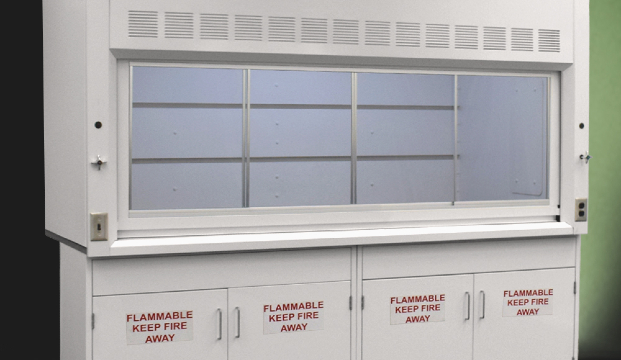When properly designed, installed, and maintained, fume hoods can significantly reduce exposure to hazardous substances, thus protecting laboratory personnel and ensuring a safer working environment.
The effectiveness of a fume hood is dependent on several factors:
- Design and Construction: The design of the hood is crucial for effectively containing and exhausting hazardous substances. To achieve this, a sash is incorporated, serving as a movable window that enables control over the airflow.
- Airflow and Velocity: It’s super important to have good airflow. The hood needs to keep a certain speed of air coming in to make sure it catches and gets rid of contaminants properly. Usually, the standard is 100 feet per minute (fpm) right at the front of the hood.
- Location and Installation: The placement of the fume hood in the lab affects its performance. It should be installed away from high-traffic areas, doors, and windows to avoid disturbances in airflow.
- Maintenance and Testing: Regular maintenance and testing are essential to ensure the hood operates correctly. This includes checking airflow, inspecting filters, and ensuring the sash and other components are functioning properly.
- User Practices: The effectiveness also relies on how users operate the hood. Proper usage includes keeping the sash at the recommended height, avoiding rapid movements that can disrupt airflow, and not overcrowding the workspace inside the hood.
- Type of Contaminants: The nature of the substances being handled also affects the effectiveness. Some highly toxic or reactive chemicals may require specialized hoods with higher containment capabilities.
When used correctly, a fume hood can effectively contain 99% of the pollutants that are emitted. Fume hoods act as ventilated enclosures, capturing airborne pollutants, chemical vapors, and exhaust, and then expelling them away from the user and the laboratory.


